Features of planting and caring for honeysuckle in the Urals
Despite the frost resistance of honeysuckle, not all varieties of this crop are suitable for growing in the harsh climate of the Urals. There are also some features of preparing the site, choosing seedlings and timing of their planting. In this article we will talk about all the nuances of cultivating honeysuckle in open ground in the Urals.
Features of the climate and cultivation of honeysuckle in the Urals
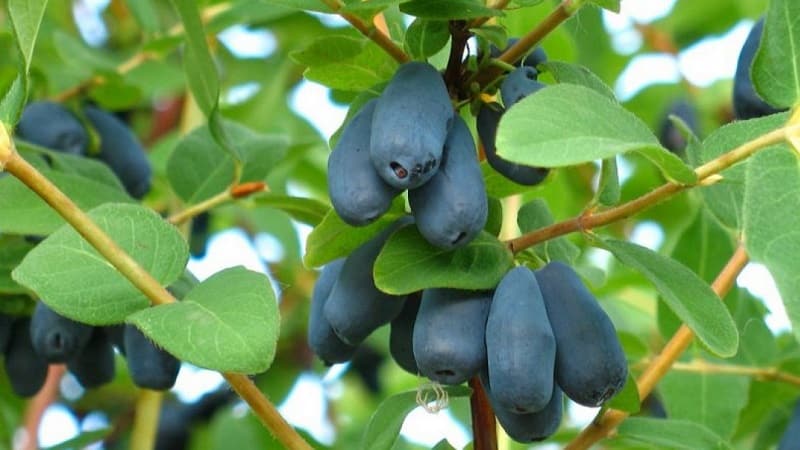
The Urals are located in the depths of Eurasia and are far from the oceans. In the north it borders on the polar seas, and in the south on the Kazakh steppes. The climate of this region is characterized as typical mountainous, on the plains it is continental. In the west of the Urals, due to more precipitation, moderate humidity is observed; in the east, the climate is dry continental.
The average air temperature in the southern part of the Urals ranges from +20°C in summer and -16°C in winter, in the northern part – +8°C and -22°C, respectively. The polar part is characterized by long (about 8 months), cold winters and short (maximum 1.5 months) summers.
For cultivation Honeysuckle varieties are suitable in the Uralsresistant to drought, low air temperatures, return frosts down to -5...-8°C, winter thaws and fungal diseases.
What varieties of honeysuckle are suitable for growing in the Urals
Let's consider several varieties of honeysuckle that are suitable for cultivation in the climatic conditions of the Urals.
Cinderella

Bush 0.5-0.7 m high, light green leaves. Dark blue berries, 2 cm long and weighing 0.7-1.7 g, ripen in early June. The taste is sweet with a strawberry aftertaste.Productivity – up to 5 kg per bush.
Amphora
The bush grows up to 1.5 m in height, the leaves are emerald, pubescent. Productivity – 2 kg per bush. The fruits ripen in the second half of June, weigh 1.5 g, reach a length of 2 cm. Sweet, with a slight sourness.
Pride of Bakchar
Berries up to 5 cm long and weighing 3 g ripen at the end of July. Productivity – up to 4 kg per bush. The taste is sweet and sour, with bitterness. Bushes height 1.6 m.
Strawberry
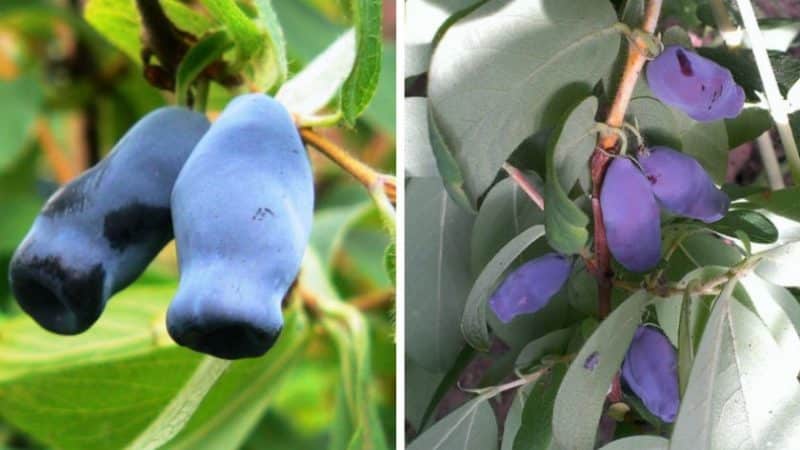
Bushes reach a height of 2 m, the leaves are elongated or oval. The berries are pitcher-shaped, weigh about 2 g, dark purple, with juicy sweet pulp and a strawberry flavor. Ripen in the second decade of June. Productivity – 2-3 kg per bush.
Amazon
The harvest ripens in the 20th of June, the berries are pitcher-shaped, weigh about 1 g, sweet with a slight bitterness. Productivity – up to 1.5 kg per bush.
Bazhovskaya
The bushes reach a height of 2 m, the leaves are large, dark green. The berries weigh about 1 g, are barrel-shaped and elongated, with a sweet taste without bitterness, ripen at the end of June. Productivity – 1.5-2.5 kg per bush.
Viola
The bushes reach a height of 2 m; fruiting begins in mid-June. The berries are oval-elongated, dark blue in color, weigh 1.1 g. The taste is sweet and sour, with a slight bitterness. Productivity – up to 4 kg per bush.
Planting and caring for honeysuckle in the Urals
Despite the unpretentiousness of the culture, growing honeysuckle in the Urals has its own characteristics regarding the selection of seedlings, site preparation and planting timing.
Choosing a place in the garden and preparing holes
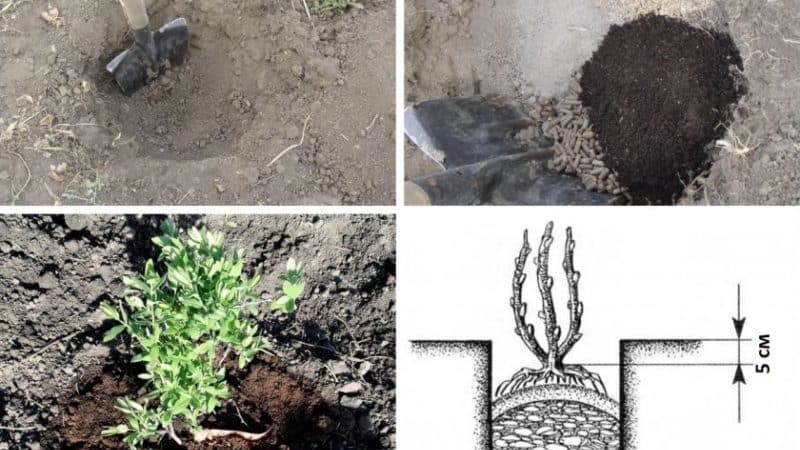
To plant honeysuckle, choose a place protected from cold winds and drafts, located on a plain or hill, to avoid stagnation of water after the snow melts. The groundwater level is at least 2 m from the soil surface.
This is a light-loving crop, so the place should be well lit. In partial shade, honeysuckle is planted only in the Southern Urals, where in summer the soil warms up to +50°C.
Preparing for landing
Taking into account the climatic conditions of the Urals, when purchasing planting material, preference is given to 3- or 4-year-old specimens - they adapt faster to new conditions and begin to bear fruit earlier. Healthy seedlings have developed, well-branched roots, 3-4 elastic shoots 40 cm long and many developed buds.
Plants are sold with a closed (in containers) or open root system. In the first case, the soil should be clean, without plaque around the roots. If they are open, before planting they are treated with fungicides (Fitosporin-M, Baktofit) or for 15 minutes. soaked in a 1% solution of potassium permanganate to prevent root rot and other diseases.
2 weeks before planting, the area is dug up using a shovel and cleared of weeds and plant debris.
Soil requirements
Honeysuckle grows well in nutritious soil with good aeration, moisture permeability and neutral acidity. The best option is loamy and clay soil.
Due to the fact that the soil in the Urals is predominantly heavy loamy, when preparing planting holes, 8 kg of coarse sand and humus are added to each hole.
Dates, scheme and rules of planting
Due to the early and long winter, the optimal time for planting honeysuckle in the Urals is the end of spring and the beginning of summer, if we are talking about seedlings with an open root system, or a month before frost when planting plants in containers.
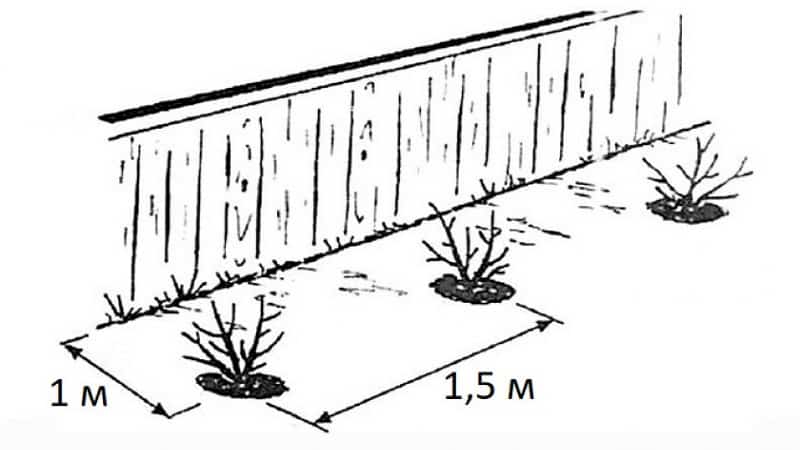
How to plant honeysuckle in the fall in the Urals:
- In the prepared area, dig planting holes measuring 1 m wide and 1 m deep.
- At the bottom of each, lay a layer of drainage made of small pebbles or broken bricks 15-20 cm thick.
- Add 50 g of potassium salt and superphosphate to the wells.
- Form a hill in the center of the planting hole, place the seedling on it, and straighten the roots.
- Cover the plants with soil so that the root collar is buried 3 cm.
- Compact the soil and water the plantings at the rate of 10 liters of water for each seedling.
- Mulch the tree trunk with sawdust, spruce branches, peat, grass or sphagnum moss.
The distance between bushes should be about 2 m.
Features of cultivation
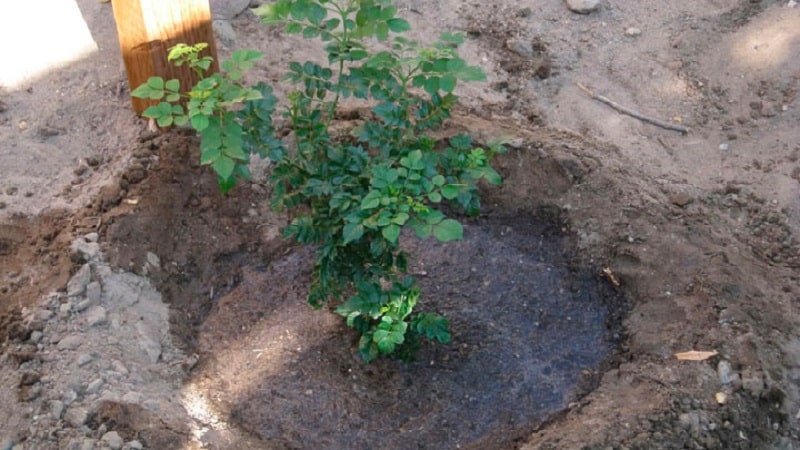
Honeysuckle is watered as the soil dries, spending 20-30 liters of settled water on each bush. Watering is especially important during the period of flowering and fruit formation - lack of moisture at this time leads to a decrease in yield.
Reference. To reduce moisture evaporation, the soil in the tree trunk circle is mulched with peat, moss or sawdust.
After watering, the soil is loosened to improve access of moisture, oxygen and nutrients to the roots. At the same time, weeding is carried out and weeds are removed, which takes moisture, useful micro- and macroelements from the soil and creates a favorable environment for development diseases and pests.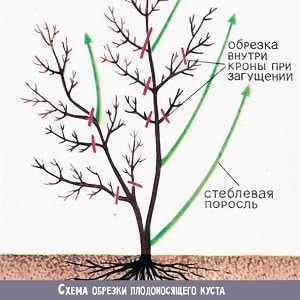
Every spring, sanitary pruning is carried out, removing all dry and damaged shoots, and in the fall - formative pruning: branches growing inside the crown are cut out, and weak ones are shortened to 20 cm or cut to the base, so that the crown consists of strong and well-fruiting shoots.
When the bushes reach 10 years of age, anti-aging pruning is performed. All old and weakly fruiting branches are cut off to the stump, leaving 10-15 young shoots on the bush.
They begin to feed the bushes 2 years after planting. To do this, dig a furrow in the tree trunk circle to apply liquid fertilizers:
- spring (before the buds swell) – urea solution (20 g per 10 liters of water);
- during flowering - a solution of wood ash (200 g per 10 l);
- fruiting period - potassium-phosphorus solution (50 g of superphosphate and potassium salt per 10 liters of water).
Lack of nutrients negatively affects the quality and quantity of the crop.
Pollinators
Due to the long and cold winters in the Urals, pollinator varieties are selected based on the flowering time of honeysuckle.
So, the best pollinators for Cinderella are Azure, Gerda and Fire Opal; for Amphora - Viola, Nymph, Violet and Malvina; for Bakchar's Pride - Silginka, Blue Spindle, Blue Bird, Giant's Daughter and Bakchar Giant; for Strawberry - Delight and Success.
Reference. It is better to plant at least 4 different varieties nearby.
Disease and pest control
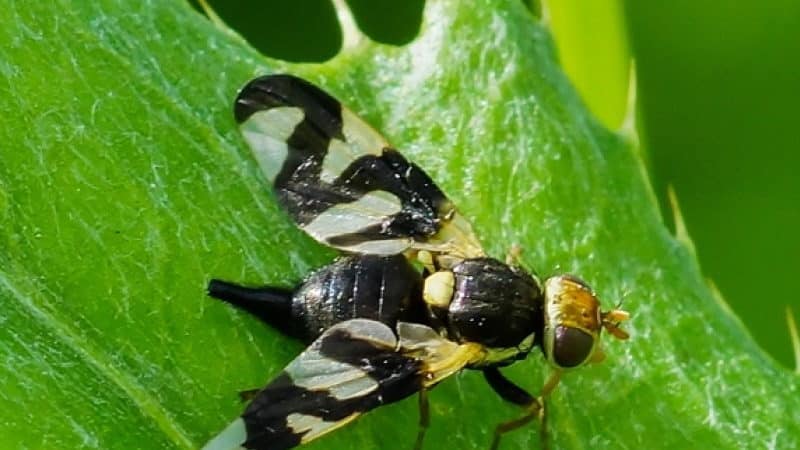
The culture is characterized by good immunity. Diseases develop only as a result of violation of planting or care rules, for example, with excessive watering, excess fertilizer or severe pruning.
Honeysuckle is affected by various types of spotting caused by fungi, or root rot that has developed due to waterlogging of the soil.
To combat fungal diseases, bushes are treated with fungicides (“Agate”, “Albit”, “Alirin-B”, “Trichodermin”, “Fitosporin-M”, “Planzir”). For prevention, plants are sprayed with a solution of Bordeaux mixture. In the Urals this is done in early spring, before the start of the growing season.
Among pests, aphids are dangerous. Due to the attack of these insects, the shoots lack nutrients, the leaves wither and fall off.To get rid of aphids, the bushes are treated with infusions of garlic or tansy and insecticides (Akarin, Aktara, Decis, Tanrek).
Important! Spraying is carried out only after harvesting.
Preparing honeysuckle for the Ural winter
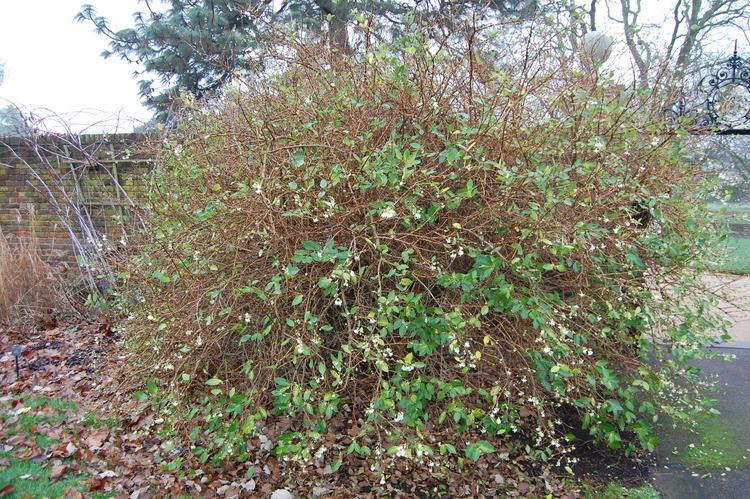
Frost-resistant varieties of honeysuckle, suitable for growing in the Urals, tolerate drops in air temperature to -35...-50°C, so adult bushes do not need winter shelter.
At the end of autumn, all weak or damaged branches are pruned, the lower shoots are hilled, the tree trunk is cleared of plant debris and mulched with spruce branches to protect the bushes from rodents.
Young seedlings are covered with coniferous branches for the winter.
Reproduction

To propagate honeysuckle in the Urals, vegetative methods are used: green and lignified cuttings, layering and dividing the bush.
Green cuttings are harvested in mid-May, cutting annual shoots into pieces 10-12 cm long so that each has 2-3 buds. The upper cut is made straight, the lower cut at an acute angle 8 cm below the internode. Cuttings treated with a growth stimulator (Kornevin), planted at an angle in a container with wet sand and covered with polyethylene. Plants take root after 15-20 days; in the fall they are planted in open ground.
Lignified cuttings 15-18 cm long are obtained in the spring from strong and healthy annual shoots, which are cut from the bushes in the fall, put in the refrigerator or buried in the garden for winter storage. Before planting, the cuttings are soaked in a root former solution (“Heteroauxin”) and planted at an angle in wet sand, deepening so that only 1 bud remains on the surface. Rooting occurs in a month.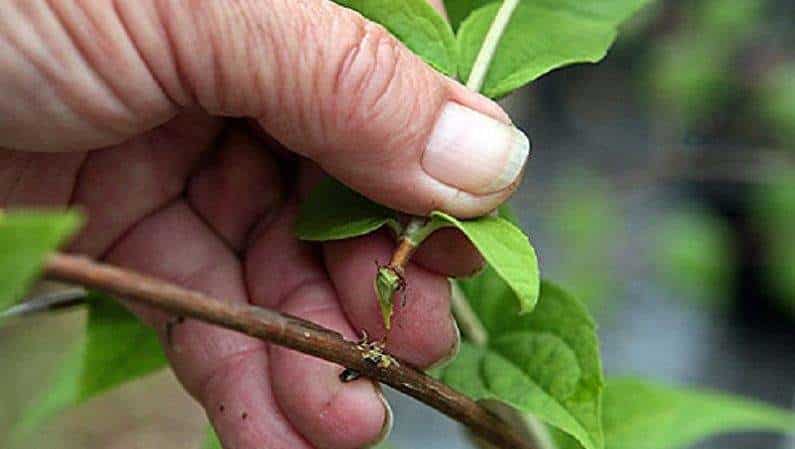
To propagate by layering, at the beginning of spring, strong side shoots are selected from the bush, bent to the ground and covered with soil to a depth of 5-6 cm, leaving the top of the shoot. In the summer, soil is regularly added to the layering, watered and loosened. In autumn, the seedling is separated from the mother plant and planted in a permanent place.
When dividing a bush, plants older than 8 years are dug up and divided into several parts with a knife or ax so that each has its own shoots with roots.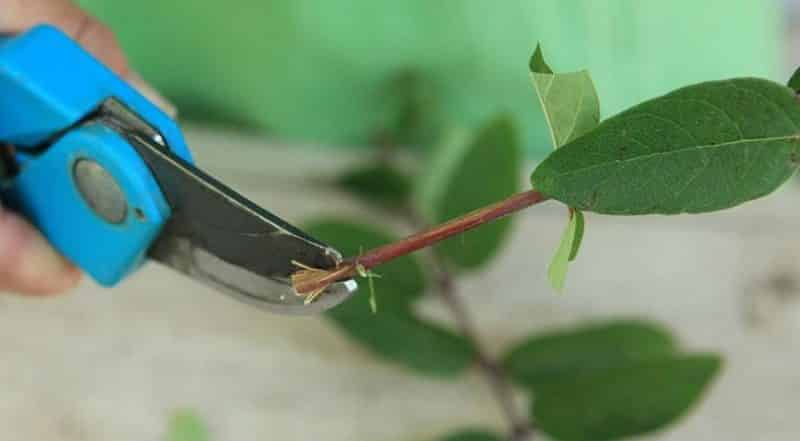
Difficulties in growing
Problems when cultivating honeysuckle in the Urals:
- the berries are formed small and sour - the plants did not have enough nutrients or light;
- the bushes practically do not develop, the leaves wither and fall off - signs of root rotting due to excessive watering, stagnation of moisture or the proximity of groundwater;
- the appearance of spots on leaf blades is a symptom of fungal diseases.
Conclusion
The Urals are characterized by a harsh climate, but thanks to the work of breeders, there are a number of honeysuckle varieties suitable for cultivation in the conditions of this region. In order for the experience to be positive, it is important to pay attention to the choice of variety, preparation of the site and adherence to planting dates, which differ from other areas.